For decades the town of Mezhova welcomed trains criss-crossing Ukraine and continuing east to Russia through the wheat and sunflower fields of the Donetsk region, but now it is the last stop before a front line that is creeping ever closer.
Trains ran a further 40km to Pokrovsk until last autumn, but Russian troops are now bearing down on that small coal mining city and have pushed around its southern flank to within 20km of Mezhova, where people no longer flinch at the boom of artillery battles that rage for hours.
“We feel fear and panic and worry – but life goes on and for now we carry on here,” says Oksana, as she walks with her friend Inna Ruban down Mezhova’s main street and the air-raid siren wails again through the clear, cold air.
“It’s hard to think about leaving and finding a place somewhere else, and we don’t want to do that – for as long as we can, we’ll hope for the best and believe that everything here will be fine,” adds Oksana, who declines to give her surname.
READ MORE
“People are making plans for what they might do, but we really want to stay here ... and we believe in our armed forces,” says Ruban, a teacher at one of the schools that still serve this 8,000-strong town and the 22,000 people of the wider Mezhova district.
The community has grown since Russia’s all-out invasion of Ukraine in 2022, as 5,000 people fleeing the enemy’s grinding advance found safety here just inside Dnipropetrovsk province, which has not been infiltrated by Moscow’s troops during 11 years of conflict.
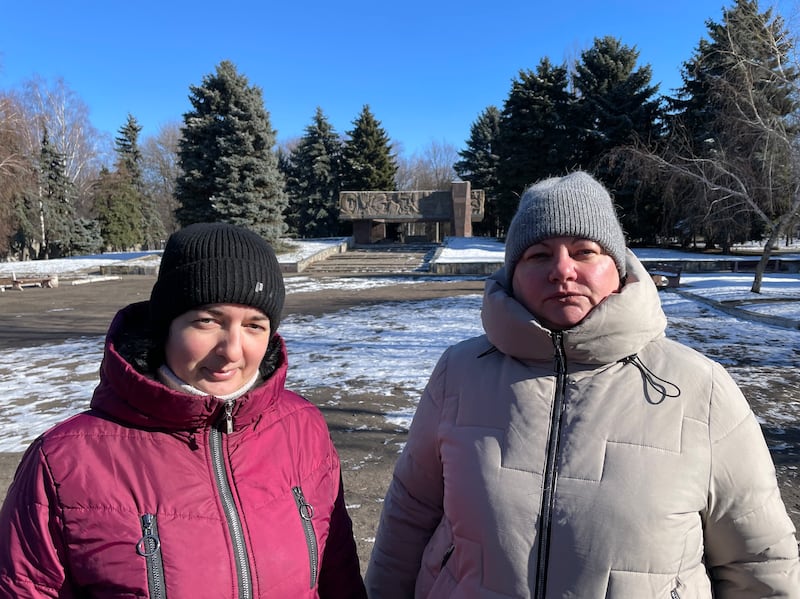
“We’ve been scared before. War has affected all our families since 2014,” says Oksana, recalling Russia’s use of proxy militia forces to seize parts of Donetsk and Luhansk regions after occupying Crimea in response to Ukraine’s pro-western Maidan revolution.
“My husband, a soldier, is missing in action. We worry for our children and our parents. I don’t have work and how can I look for work when, God forbid, I might have to leave tomorrow? But we still have gas and electricity; except for occasional power cuts everything is working here.”
Mezhova was officially founded 141 years ago as mining, heavy industry and farming developed rapidly in eastern Ukraine and were served by the railway line that ran through the town and linked the cities that are now Russian-occupied Donetsk and Kyiv-held Dnipro.
With Pokrovsk and Velyka Novosilka to the southeast under intense pressure, Mezhova is now a hub for Ukrainian troops who frequent its shops and cafes and rumble through town in armoured vehicles and SUVs bristling with drone-jamming antennae.
[ Ukrainians question Kremlin’s desire to end war as EU warns against ‘appeasement’Opens in new window ]
At Mezhova’s bustling post office, Yevhen Khrypun collects fresh copies of the Mezhivskyi Meridian, the local newspaper where he has worked for more than 20 years and now serves as chief editor.
“About 1,000 subscribers have paid in advance for the newspaper for a year or half a year. We’re only 20km from the front line and we don’t know what the situation will be like in a year’s time, so that’s a real show of faith and a big financial help for us,” he says.
Even as enemy troops pushed towards Pokrovsk last autumn, farmers around Mezhova planted winter wheat that will only be ready to harvest in June or July; Khrypun sees it as another sign of confidence that Ukraine’s defences will hold, but it could also reflect the ominous pace of Russia’s approach to Dnipropetrovsk region.
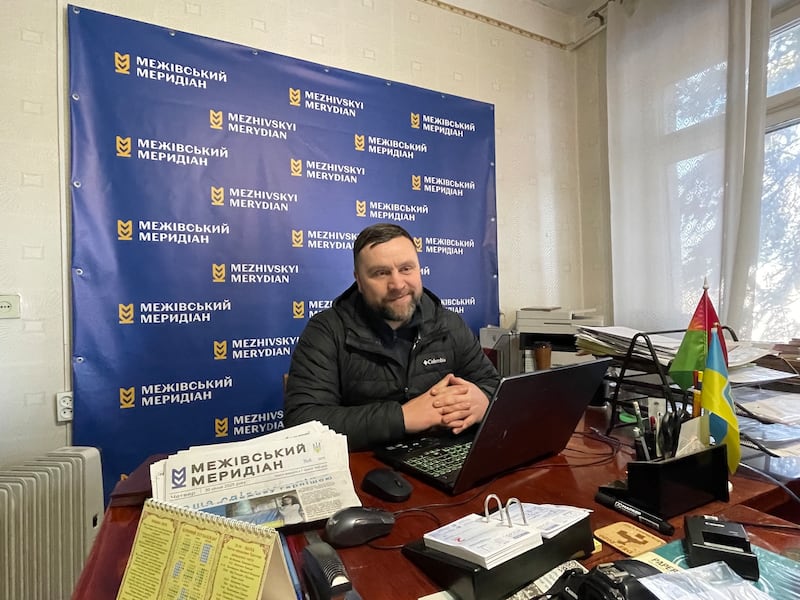
Like many locals, Khrypun is optimistic without taking anything for granted. The Mezhivskyi Meridian is due to celebrate its centenary in May 2030, but he says: “Before we even think about that, let’s make sure we get to 95 years here, at home.”
US president Donald Trump spoke to Ukrainian counterpart Volodymyr Zelenskiy and Russian leader Vladimir Putin on Wednesday, and said afterwards that negotiations to end Europe’s biggest war in 80 years would start “immediately”.
In Mezhova, people do not know what will come first, some sort of ceasefire or the kind of Russian bombardment that has destroyed many towns and villages farther east, but nearby artillery fire now rumbles day and night and danger is growing: last Saturday, an attack drone set fire to an administration building in the town centre and two weeks ago a Russian air strike destroyed a school in nearby Novopavlivka village.
“That was my first school,” says Snizhana Salivon, a 23-year-old journalist with the Mezhivskyi Meridian who returned to her hometown after graduating from university in Kharkiv, Ukraine’s second city, where she was when the full-scale invasion began.
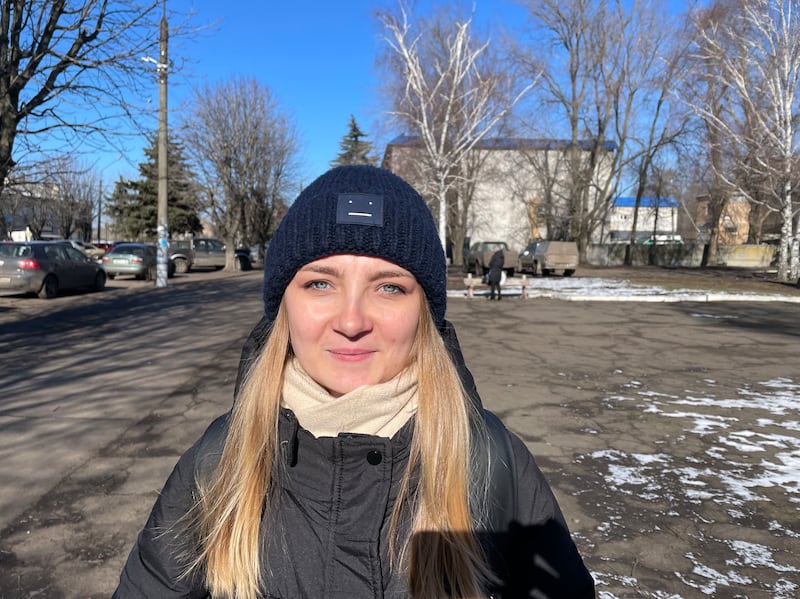
“It’s very strange. First you hear explosions far away, then they start getting closer and louder. And you see more military vehicles and soldiers and more than 5,000 displaced people arrive in the community. You feel how the town and its people change,” she says.
“Three years ago you never heard an air-raid siren but now it’s a constant part of our life. Things change bit by bit; you feel it and notice it and then you get used to it. You get used to the sound of shelling and explosions. But it shouldn’t be part of normal life.”
It is well below zero in Mezhova, but in the town centre three children in warm coats and hats stand for hours at a table covered with soft toys – cats, dogs, hearts, frogs and even tanks – that they have made to raise funds for the Ukrainian army.
Dmytro (14), Diana (14) and Kamila (9) say they have collected about 3 million hryvnia (€69,000) since 2022, which has paid for a car, trailers, a generator, night-vision gear and other equipment for some of their country’s hard-pressed soldiers.
“The war touches everything,” says Salivon. “You see young children collecting for the military. Some people make camouflage nets, some do volunteer work. Everyone tries to do something. Most of us have relatives and friends in the armed forces.”
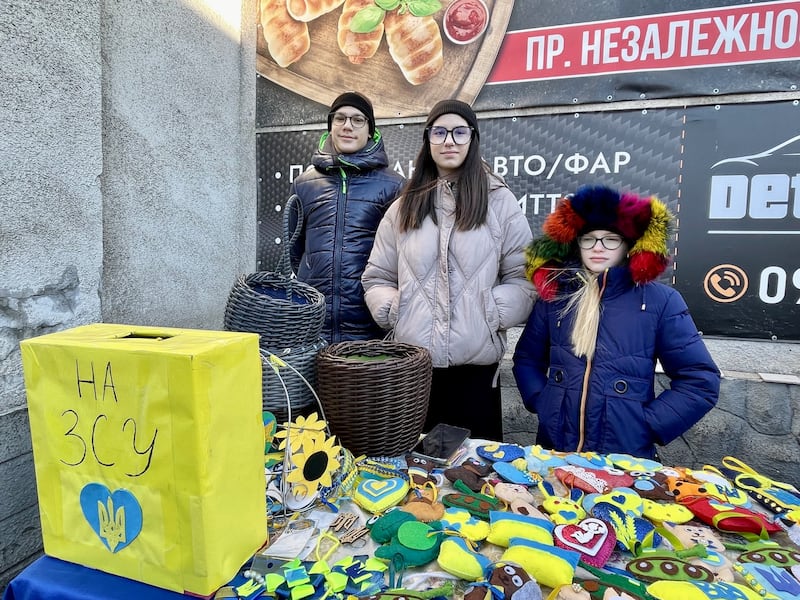
“Maybe people are more open to each other now ... so perhaps there are some positive sides to the changes. But it’s bad in terms of the fear and worry that people feel. That affects us all psychologically.”
Everyone here wonders what the future will hold for them and for Mezhova. “People aren’t planning to leave right now but they are looking at where they might go if they have to,” says Salivon. “Some people are packing an emergency bag in case they have to move urgently. Others have had one standing ready since 2022.”
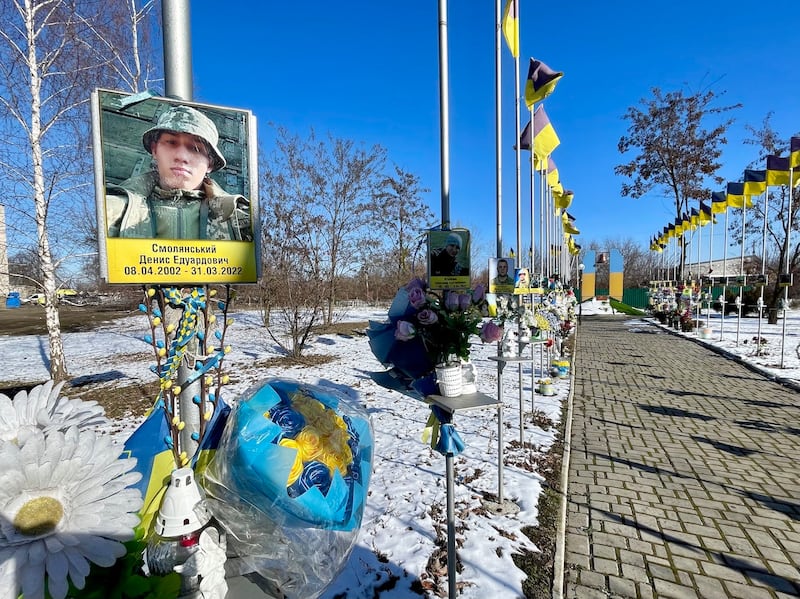
Near a memorial to 57 local men who have died fighting Russia’s invasion, and the council office that will be gutted by a drone strike a few hours later, Volodymyr Zrazhevskyi, the head of the town administration for nearly a decade, says soldiers from Mezhova “have been on the most dangerous parts of the front line.”
“People here are not sneaky. If they are called to defend the homeland then they go, while people in other places have other options [to evade conscription] and they use them.”
Despite a lack of resources, Mezhova has coped with the influx of displaced people and has kept its schools, hospital and other services working, and has quickly repaired infrastructure damaged in the war.
“People really hope and believe that it will stop,” says Zrazhevskyi. “We don’t know how, and unfortunately we can’t influence that – just let it stop.”




















